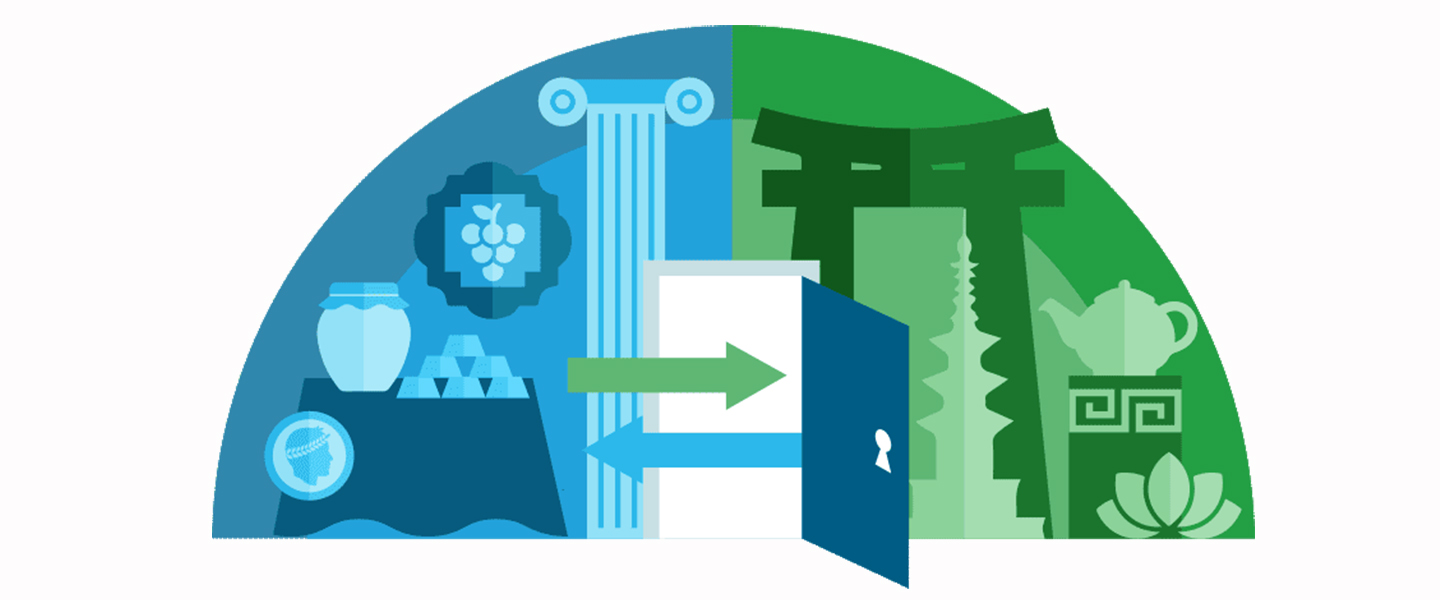Belt and Road: Spurring knowledge exchange


The ancient Silk Road was transformational in two key ways. First, and most obviously, it exposed two vast regions of the world to each other’s goods. Silk, tea, porcelain and medicines flowed west; gold, honey, wool, and grapes flowed east. Just as importantly, Silk Road routes enabled the ebb and flow of knowledge, cultures and ideas that helped to shape the modern world as we know it.
Like its ancient counterpart, the modern Belt and Road initiative (BRI) is forging connections; not just facilitating commerce and opening new markets for products and services, but also enabling knowledge exchange and development of cultural links.
Certainly, one of the primary goals of the BRI is for commerce to flourish. In the medium-term, China aims for annual trade between countries along BRI routes to reach USD2.5 trillion within the next 10 years, up from about USD1 trillion now. In building railways, ports and roads, the initiative is laying the foundations for trade to become faster and cheaper.
Shipping giant Maersk estimates that a 10 per cent improvement in connectivity reduces trade costs by 3 per cent and increases volume by between 5 and 9 per cent.
That effect was particularly pronounced at the eastern terminus of the Eurasian Land Bridge in Yiwu, China, where the opening of the rail freight route to Europe saw foreign trade at the city’s commodity centre jump 46 per cent year-on-year to USD25.7 billion in 2015.
The World Bank concluded in a report back in 2014 that the BRI train routes connecting China to Europe via Central Asia and Russia already offered the best value to exporters and importers in terms of speed and cost. The lender also found that BRI projects in Central Asia had produced substantial improvements in infrastructure quality, customs efficiency and logistics, particularly along routes in Russia and Kazakhstan that have seen the heaviest investments so far.
The first Yiwu-to-London train via the Khorgos dry port in Kazakhstan carried 44 containers and took 18 days, as opposed to 40 days by sea. As the BRI spurs advances in rail technology and speeds up customs procedures, two of the most expensive and inefficient aspects of trans-Eurasian road and rail freight (namely cargo transfer and customs clearances) will gradually become quicker and cheaper.
Trade powers economies, but it also forges human connections. Personal travel, as well as trade, should also become cheaper and faster.
Passengers between Nairobi and Mombasa in Kenya used to have the choice between a 12-hour bus journey on a notoriously dangerous road and a slow, unreliable colonial-era railway. Now, thanks to a new line built under the BRI, they can make the journey in four hours on a comfortable train that’s cheaper than the bus. The recently inaugurated Ethiopia-Djibouti train connects passengers and freight from the landlocked East African nation to Djibouti’s sea port – and Maritime Silk Road routes (see map) – in eight hours, rather than in three days by road. It’s now possible to drive 3,200 kilometres from Xinjiang in China to Islamabad, Lahore and the port of Gwadar in Pakistan.
Cultural connections also grow. The university in Duisburg, Germany – a dry-port hub that’s becoming China’s BRI gateway to Europe – now has a Confucius Institute and hosts the largest number of Chinese students in Germany. Tourists from around Central Asia and China now visit Khorgos, a city that previously only saw domestic Kazakh visitors.
Xiang Zhaolun, China’s Vice-Minister of Culture, said last year that more than 300 “official cooperative deals” had been signed on cultural exchanges in BRI countries. The fruits of these exchanges are already evident, such as in Guangzhou, where the annual Belt and Road International Fashion Week is hosted. A Belt & Road film night at the 21st Shanghai International Film Festival in 2018 showcased productions from Poland, Russia and Indonesia, while a Belt and Road Brand Expo attracted more than 200 companies from BRI countries and featured products from Ghana, Madagascar, Uzbekistan and Taiwan.
China has also seeded goodwill among BRI countries by boosting cooperation in science, health and education. The government is offering 10,000 scholarships to foreign students every year through 2022, in the process helping to turn China into the third most-popular country for overseas study, after the US and the UK. More than 200,000 of the overseas students in China come from BRI countries, many of them under specific Belt and Road scholarships offered by Chinese universities.
The modern Silk Road, just like its ancient counterpart, is about much more than infrastructure and commerce. The goods and money that changed hands along those routes centuries ago are long gone, but the cultural legacy remains. Likewise, the scientific, intellectual and cultural links forged along the Belt and Road may outlive the wealth it creates.
This article was also published on Bloomberg.com.